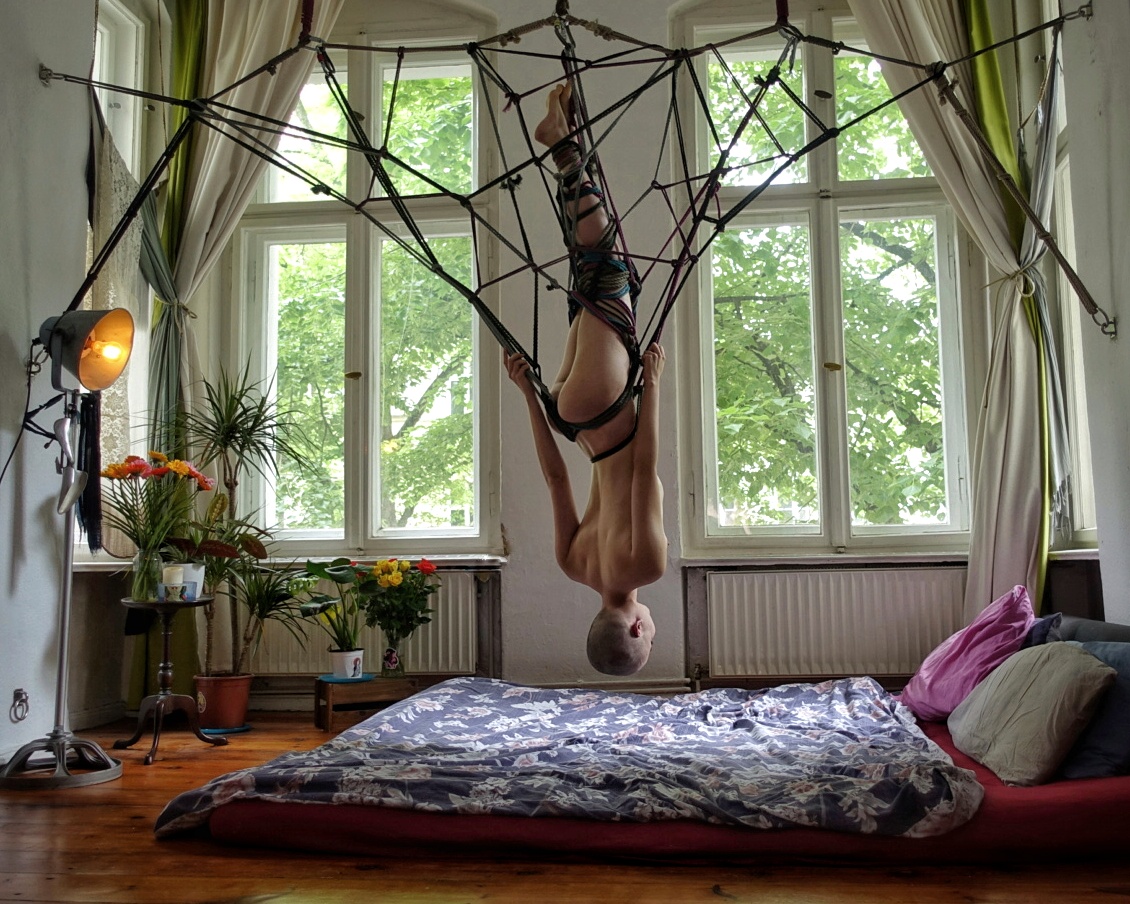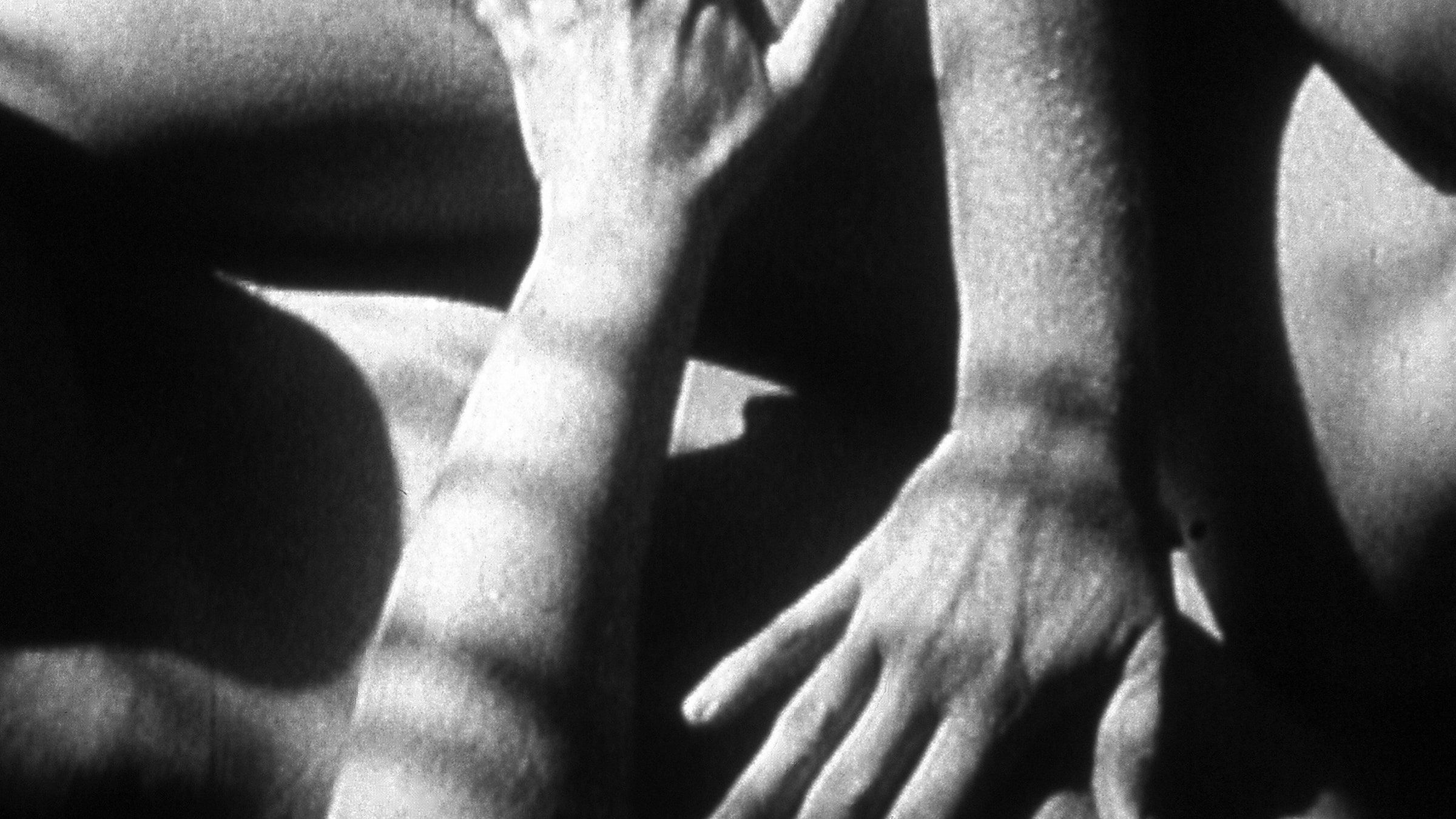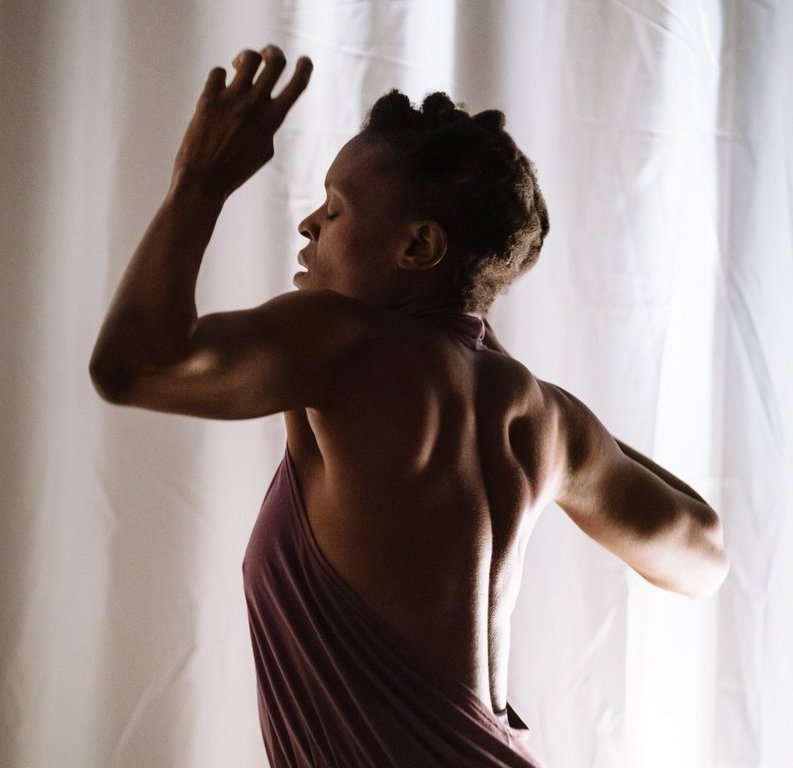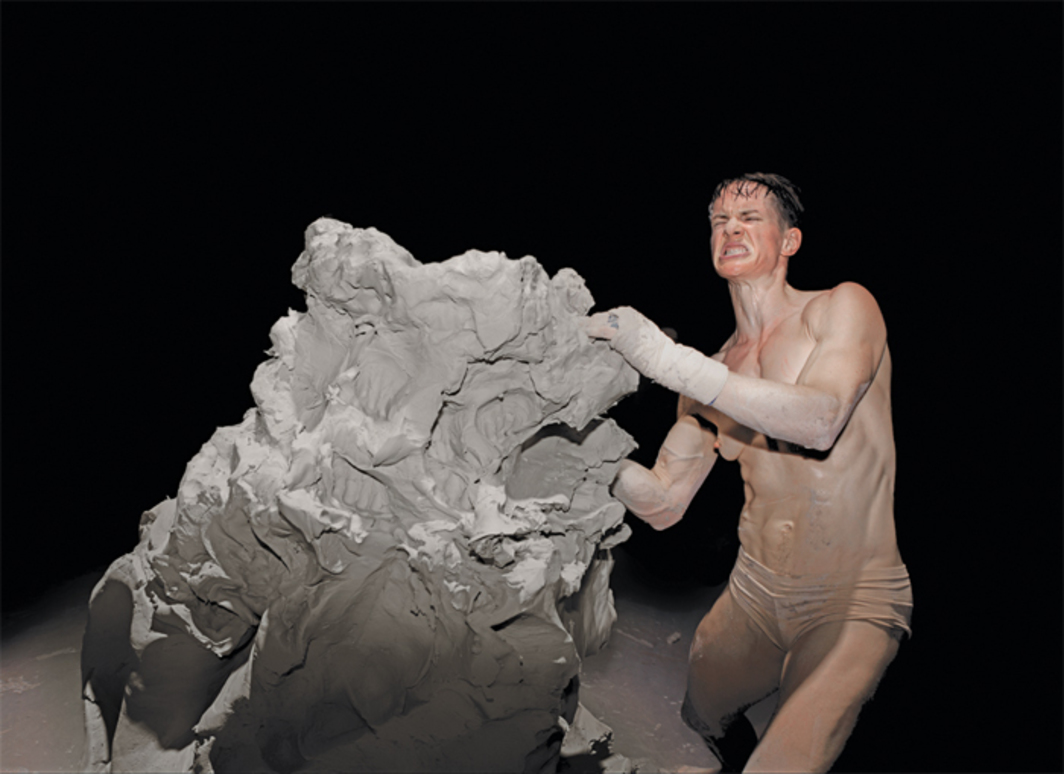To be with someone in their dying moments is arguably the most intimate experience we can share. I feel immensely privileged to have done so. It’s not one that many of us will experience more than a handful of times in our lives, if that. But those moments – suspended in a different realm of time and space – are formative and stay with us.
While death as a subject is ubiquitous throughout art history, the experience of being with dying is strangely absent. While in recent years an increasing number of artists and curators have attended to healthcare, illness and palliative care as part of life’s fabric – subjects that have until now been strikingly overlooked in mainstream cultural discourse – it is still hard, however, to find artworks that attempt to bridge the experience of this most poignant moment of life. As Barbara Hammer remarked in her 2018 lecture, and parting gift to the world, The Art of Dying: ‘There is a general fear of talking about death in the western world. It is as if by not mentioning and discussing it, it would go away.’ The truism of ‘life’s one certainty’ is one which few of us contemplate before we have to. AA Bronson (Interview AM346) and those most affected by the AIDS crisis have had to confront the reality of loved ones dying more times than anyone ever should, and have thus been embroiled in pain, injustice and anger. While Bronson has never shied away from talking of death, he has also found himself faced with the impossibility of doing so: ‘What is there to say of death? We live and then we die. While we live, we are surrounded by the dying, and by the dead. We are all dying.’ Abrupt, unemotional, factual. It is as if the intimacy and intensity of those slow weeks, days and hours of losing those he loved the most was impossible to relay to others.
There are, of course, artists who have attempted to share this moment of marking life. Sophie Calle’s film Impossible to Catch Death, 2007, is one such exception. Edited from hours of footage into 11 minutes, the video captures the ungraspable moments where life slips into death, when Calle and the attendant nurses were unsure whether her mother had passed away. Likewise, Bill Viola’s Nantes Triptych, 1992, presents footage of his mother’s death alongside a someone giving birth, making a simple truism about the ‘journey of life’. But both films do little to evoke the depth of intimacy of sharing the space with someone in their dying breaths. Conversely, Steven Eastwood, who spent many months filming four people in a hospice on the Isle of Wight navigating the last days of their lives, experienced the practical difficulty of being present as someone drew their final breath. His film ISLAND, 2018, fearlessly holds a static shot of the final seven minutes of Alan Hardy’s life, refusing to give relief from the sight of his rhythmic rasping breaths as they gradually slow to a halt. We are not implicated in this death – it was an inevitable, natural and everyday occurrence – and he was a willing participant, yet it is nevertheless uncomfortable. Not scared to confront the most difficult of subjects, Gregor Schneider’s proposal to use an exhibition space to show a person dying peaceful or somebody who has just died, disappointingly caused huge controversy with over simplified headlines instead of grasping the artists desire to present the beauty in death.
Elsewhere, we consume death in abundance through TV, film and literature. We are thrilled, entertained and, yes, even sometimes deeply moved. But do we really sense the reality and intensity of the emotion, the possibility even of beauty in the intimacy of sharing space with the dying? In Dodie Bellamy’s essay ‘Phone Home’ in When the Sick Rule the World, the author aligns the experience of her mother’s death with that of ET, watching the filmic death for clues as to how to navigate her mother’s final hours; not knowing where else to look for guidance. Unincorporated into the fabric of living and distanced from the intimacies of dying, when we eventually have to confront the experience of dying we’re often left floundering, so rarely does our culture prepare us for its reality. ‘We do ourselves a disservice to not engage in ruminations of this most powerful life force’, Hammer continued in her lecture, ‘for aren’t we alive until our last breath and isn’t this a rite of passage we wish to address in our art, in our seminars and in our museum exhibitions. By hesitating to face the last phase of life we give a message to hush up and avoid.’ The question nevertheless prevails: how do we get close to relaying this most profound and private experience of life?
Privately to friends, I liken the intense intimacy to that of bondage. For those reading the word ‘bondage’ and picturing the most common meaning of restraint and BDMS, this might seem insensitive. But my interest is connected to giving up the ego, to put oneself in a position of physical vulnerability, thereby tuning into the minutae of the body’s corporal and sensual dialectic that we normally overlook. As in the shared space of the sick room, there is a heightened intensity of the senses, a vulnerability of the flesh and the emotional is indistinguishable from the corporal, as mimetic rhythmic breath takes on a dialogue between bodies. I found an ally in these thoughts in artist Alex Dermatis, whose sex-positive performance practice combines aerial ropework with influences from tantra and Kinbaku-style bondage (a sensual, emotive form of traditional Japanese Shibari rope tying), but who has also experienced being present through a loved-one’s death.
Unconsciously, we had both in our separate experiences taken on what Kathy Acker writes of as ‘the language of the body’. In her essay ‘Against Ordinary Language: the Language of the Body’, Acker describes her daily bodybuilding routine as an immersive experience: the intense concentration on the body, differing vastly from the rest of life, is a complex and rich world, yet one that she found impossible to describe in words. Crossing the threshold into the gym, a corporeal language takes over: her normal ‘masses of swirling thought, verbalised insofar as I am conscious of them, disappear as mind or thought begins to focus’, replaced instead with counting, as she pushes each muscle group to their limits. Acker describes this journey into her own body as a process of moving closer ‘toward foreignness, into strangeness’, revealing the chasm between ‘my body’ and ‘I’. She sees in bodybuilding an attempt to try to understand and control the physical in the face of the body’s inevitable demise. Sharing the intimacy of being with someone on their death bed, Dermatis and I had taken on this language beyond words that existed in the counting of inhalations, pauses and exhalations, attention to minimal muscle contractions and the slightest of movements, in an attempt to attune ourselves to the inevitable. As Acker writes, as the bodybuilder counts their own breaths, so they count their body’s mortality.

Over the past four years, Dermatis has been resident ropework artist at Berlin’s famed fetish club, KitKatClub. For up to eight hours at a time, they have had full responsibility for someone else’s body; filtering out the noise and distraction of the club, Dermatis must attune completely with their collaborator’s body, sensing its intricacies and the limits of its endurance. Outside the public audience, Dermatis hosts private paid sessions from a home-studio; individuals hand over agency of their bodies, entrusting it, object-like and liberate themselves from responsibility. Dermatis’s practice, by their own admission, sits somewhere between artist and sex-worker, providing the nuanced sensual expertise that both these professions specialise in, intimately negotiating each patron’s physical – and mental – strengths and vulnerabilities. Blindfolded and bound, one is tantalisingly aware of one’s vulnerability. (On heterosexuality, artist Jesse Darling once said to me, flippantly but poignantly: ‘The only thing that is exciting about sleeping with men is that you know he could kill you – but he won’t.’ With sight and freedom of movement removed, the body tingles with anticipation as the senses are heightened to the extreme: signs of intention are read through breath on the skin, physical proximity is sensed through radiated warmth, movement is interpreted through the slightest of sounds. The boundary of one’s self no longer stops at the outer layer of skin, but consumes all the variables within proximity, amalgamating in the sensory imagination of the body. In Donna Haraway’s 1988 essay ‘Situated Knowledge’, she wrote, ‘bodies as objects of knowledge are material-semiotic nodes. Their boundaries materialise in social interaction’; they are tentative, volatile and incomplete, constantly evolving in conversation. If boundaries, and therefore all objects and bodies, do not exist, but are only drawn by a reality imposed through mapping practices – such as enacting the self, separate and distinct from other beings – when the social interactions we use to define our boundaries of the self are removed or shifted, potential intimacies might be encountered. Sitting around the deathbed of my paternal grandfather, with my close family, tuning our attention to the straining movement of muscles drawing in his every breath, our oneness transcended the simplicity of shared chromosomes. Likewise, the trusting intimate oneness between Dermatis and his collaborator is more than gravitational mathematics. Poignantly, during Hammer’s The Art of Dying lecture, intended as a letter to the next generation of artists and filmmakers, she chose to show her film Dyketactics, 1974, a montage of intimacy, joy and love between friends during a trip to the countryside, where body parts don’t belong to any one person in particular, but meld together through overlaid film. As Haraway put it, ‘boundaries shift from within’. We collectively make these environments; our closeness, intimacy, and oneness are the creation of the imagination.

There is also an intimacy of interdependence here that is found in entangling one’s limited possibilities with that of another to form a whole. Take, for example, Adam de la Cour and Neil Luck’s collective performance in 2012 of Kurt Schwitters’s sound poem Ursonate: connected by a 6ft plastic tube, Neil provided the lungs, larynx and vocal folds while Adam articulated this raw sound into Schwitters’s words through the movement of his mouth. In the midst of lockdown, artist Sam Belinfante’s two-part radio show on touch proposed that some of our most tender moments come when vision is obscured and contact is obstructed or forbidden. Among many contemporary and classical artistic and musical attempts of making contact across ‘seemingly impassable divides’ (including Cour and Luck’s Ursonate), Belinfante refers to that most famous and powerful of images, Michelangelo’s God reaching out to Adam on the ceiling of the Sistine Chapel. It is perhaps through the intensity of this almost-touch – enabling entanglement with another through the imaginary – that the intimacy of being with someone in their dying moments can be evoked.
In one of Manon de Boer’s most potent works, Dissonant, 2010, dancer Cynthia Loemij attentively listens to Eugene Ysaÿe’s Sonata No.2 for Solo Violin of 1923; once the music stops the camera follows her contorting, flailing body, controlled yet giving in to the weight of her limbs, hands and feet rhythmically thumping the floor. Filmed in 16mm, the image breaks to black while the film reel is replenished, keeping contact with Loemij only through the sound of her increasingly panting breaths. As she pushes her body to its limits, and we listen to the breath emanating from her tiring body, as well as our own, an affinity is drawn between the two bodies, Loemij’s and our own. As in the bondage space or at the death bed, the visceral impact of listening intently in darkness to someone else’s shortened breath evokes both emotional affect and mimetic response. Bringing our breath in line with hers, we become intimately aware of both our body and the one we watch, which, without instruction, quietly undertakes a bewildering matrix of biotic mechanics. As with many of de Boer’s works, situated in the pensive space of individuals deep in concentration, Dissonant invites us into one such miniature universe.
Weary of the dualism between ‘flesh and spirit’, during the last decade of his life author Yukio Mishima, as with Acker, became obsessed with bodybuilding. In agonizingly training involuntary muscles into voluntary ones, Mishima describes bringing the mind and body together to create for a short while their own ‘miniature universe’, independent from the outside world. Mishima’s concept of transcendence through pain is further expanded in his writing on boxing, where he describes placing a blow on an opponent not as a direct physical attack but as a counter. The opponent becomes half of a complete action, as in Hammer’s overlaid bodies or Dermatis’s corporeal compositions where collaborators blend into a single form. But for Mishima it is the sensation of pain – rather than movement – in the interaction that provides the physical expression of consciousness. It brings to mind Viola Di Gancio, 2006, where fishhooks piercing through the skin of Santiago Genochio’s back pulled taut the strings of Tessa Wills’ cello as she played from several metres away. Visible corporeal pain heightened awareness of their collaborative performativity, interdependence and the exacting skill of manoeuvring bodies and instrument; as in Dermatis’s bondage practice, each became an extension of the other – skin, muscle, bow, strings and hands working in synchronicity, each redundant without the others – trembling in the face of pain and endeavour. Acker writes that inevitably, time and again, failing to achieve that next milestone, the bodybuilder meets that which cannot be finally controlled or known. In opening this window into the inner workings of her body, confronted by its corporeal limitations, she describes facing her own death.
LA-based artist Cassils follows in Acker’s footsteps, but opens this out to the collective experience. He treats the body as a sculptural form, ‘a continual becoming’, using its malleability to transform his female body to a male one through intensive training and diet, a process that operates in the corporeal space of ‘indeterminacy, spasm and slipperiness’. In Becoming an Image, 2012–, this slipperiness is extended out into the multitude of bodies in the room. Performing in an entirely light-locked space, Cassils’s frantic action – uppercuts, jabs, hooks, knees, elbows and shins meeting a 2,000lb mound of clay with brute force in the centre of the room – is fleetingly illuminated by the intermittent flash of a camera, imprinting momentary visual fragments on one’s retinas. Melding with the sound of panting, grunts and limbs meeting clay, the imagined body is stitched together from visceral fragments, held in the shared imagination of both performer and witnesses, belonging entirely to neither. By performing this within the presence of others Cassils’s body becomes one that is intimately created, shared and held in the collective space.
These shifting boundaries shaped through social interaction with the audience are expanded in the work of Okwui Okpokwasili to unfold those accumulated over generations. In her lucid piece Bronx Gothic, 2014, Okpokwasili’s body shakes and trembles, wild and stressed, eyes rolling and tendons straining, yet controlled with virtuosic skill and strength, calling to the surface a lineage of inherited experience of the black female body: unarticulated and unpronounceable but ever-present. Her work Sitting on a Man’s Head, 2018, furthers this to harness kinaesthetic empathy, challenging her audience to become participants in her archaeological uncovering of the body: packed together, walking slowly collectively, time slowed, long stretches of silence listening intently to each other’s breath and muffled whispers, interrupted occasionally by layers of words or song that surface, recede and perhaps resurface again later. She describes the space as one where ‘we are compelled to listen to each other and be linked together’. Something closer to mindfulness than performance, she demands both a complicity and a connectedness from her audience, embedded and embodied in our bodies as much as in her own. As with the deathbed or the bound body, there is a porosity that reaches beyond consciousness, blurring the binary of mind/body, and the boundary of one’s self and that of another. Bringing vastly different experiences of the same moment together, like a murmuration of starlings, each responding in interaction with those around them. For Okpokwasili, the intimacy of Sitting on a Man’s Head translates far beyond the performance space: ‘What is it to make a space where people understand that they’re being heard and know that what they give is essential?’ Most poignantly, she asks: ‘What do you carry that carries you?’

In Octavia E Butler’s cult dystopian sci-fi trilogy, the ‘Patternist’ series, characters are involuntarily linked to one another telepathically, transcending spatial limitations; invisible threads reach out through space, binding them to one another. Last September members of the international art crowd crammed into London’s Ministry of Sound for DRAF’s annual performance event. During Hannah Perry’s performance, on a frenetic strobe-lit stage, a track-suited twentysomething runs on the spot overlaid with an amplified, fast-paced, content-packed monologue: ‘Lakey telling us to watch your belongings / Your rings are your inheritance / or next month’s rent Or / we buy gold, we cash checks / watch your belongings.’ Unexpected and out of context, those few short phrases amongst so many others appear to arrest time. The fondly remembered razor sharp wit of Lakey, a dear friend who died too young, sent shivers through me and a moment of melancholic detachment from my soundings. He wasn’t in the art world. Nobody else in that space – but Perry and two others dotted around that vast venue – knew the weight of those words. As her performer continued running to exhaustion, I shared a moment of silent internal contemplation, a pang love and loss, with the three others – somewhere – in that huge strobing nightclub. I am reminded of the Patternists; as with Butler’s characters, we share a common unarticulated yet unshakable bond, pulling us together.
Bellamy writes, ‘In the aura of death all the bullshit dissolves – the one dying is vulnerable, aching for touch, the dying body pulls both of you into the present moment’. We don’t feel the fragility of sentient existence until the body’s corporeal limits are exposed and urgent vulnerability of the flesh necessitates us being acutely present: a new-born unable to fend for itself; the bodybuilder incapable of pushing for the final bench-press; the bound body confined by ropes and gravity; the deathbed, the lifespan of the body facing its inevitable expiration, unable to push for one last breath. To answer Okpokwasili’s question: we are carrying one another, balancing responsibility, compassion and vulnerability, and in ‘the body’s inexorable movement towards its final failure’, opening a window to what Acker describes as that which ‘consciousness ordinarily cannot see’. As Dermatis’s performers describe the feeling of suspension within their web of ropes, held by the collaboration of another sentient being and the materiality of the rigging, held in place by metal pegs embedded in concrete walls, through the foundations of the building underground, on the Earth held in place through its gravitational spinning; in sharing someone’s death with them, we are bound together, firmly present in the moment. A fleeting intimate togetherness in time, tying us perfectly together momentarily.

